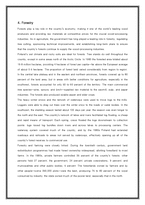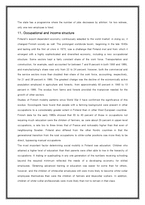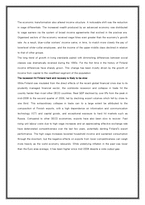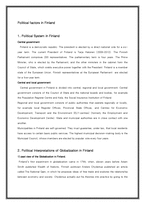[국제경영] 핀란드 시장조사-경제, 사회, 문화(영문)
 등록일 / 수정일
등록일 / 수정일 페이지 / 형식
페이지 / 형식 자료평가
자료평가 구매가격
구매가격
- 2011.09.09 / 2019.12.24
- 37페이지 /
 docx (MS워드 2007이상)
docx (MS워드 2007이상) - 평가한 분이 없습니다. (구매금액의 3%지급)
- 2,800원
최대 20페이지까지 미리보기 서비스를 제공합니다.
자료평가하면 구매금액의 3%지급!
 1
1 2
2 3
3 4
4 5
5 6
6 7
7 8
8 9
9 10
10 11
11 12
12 13
13 14
14 15
15 16
16 17
17 18
18 19
19 20
20
추천 연관자료
- 목차
-
TABLE OF CONTENTS
I. Economical factors in Finland Market
1. Introduction
2. History
3. Agriculture
4. Forestry
5. Industry
6. Companies
7. Household income and consumption
8. Unemployment
9. Public policy
10. Taxation
11. Occupational and income structure
II. Political and Legal factors in Finland Market
Political factors in Finland
1. Political System in Finland
2. Political Interpretations of Globalization in Finland
3. Finnish Global Policy and International Organizations
4. Political Risk in Finland
Legal factors in Finland
1. Trade policy
2. Copyright policy
III. Cultural factors in Finland Market
1. Personal Communication
2. Religion
3. Aesthetics
4. Education
5. Values and Attitudes
6. Manners and Customs
7. Social Structure
8. Physical and Material Environments
9. Hall's Context Framwork
10. Geert Hofstede™ Cultural Dimensions
IV. APPENDIX
Information Sources (References)
References for Economical factors
References for Political & Legal factors
References for Cultural factors
- 본문내용
-
3. Agriculture
Finland's climate and soils make growing crops a particular challenge. The country lies between 60° and 70° north latitude - as far north as Alaska - and has severe winters and relatively short growing seasons that are sometimes interrupted by frosts. However, because the Gulf Stream and the North Atlantic Drift Current moderate the climate, Finland contains half of the world's arable land north of 60° north latitude. Annual precipitation is usually sufficient, but it occurs almost exclusively during the winter months, making summer droughts a constant threat. In response to the climate, farmers have relied on quick-ripening and frost-resistant varieties of crops, and they have cultivated south-facing slopes as well as richer bottomlands to ensure production even in years with summer frosts. Most farmland had originally been either forest or swamp, and the soil had usually required treatment with lime and years of cultivation to neutralise excess acid and to develop fertility. Irrigation was generally not necessary, but drainage systems were often needed to remove excess water.
Until the late nineteenth century, Finland's isolation required that most farmers concentrate on producing grains to meet the country's basic food needs. In the fall, farmers planted rye; in the spring, southern and central farmers started oats, while northern farmers seeded barley. Farms also grew small quantities of potatoes, other root crops, and legumes. Nevertheless, the total area under cultivation was still small. Cattle grazed in the summer and consumed hay in the winter. Essentially self-sufficient, Finland engaged in very limited agricultural trade.
This traditional, almost autarkic, production pattern shifted sharply during the late nineteenth century, when inexpensive imported grain from Russia and the United States competed effectively with local grain. At the same time, rising domestic and foreign demand for dairy products and the availability of low-cost imported cattle feed made dairy and meat production much more profitable. These changes in market conditions induced Finland's farmers to switch from growing staple grains to producing meat and dairy products, setting a pattern that persisted into the late 1980s.
In response to the agricultural depression of the 1930s, the government encouraged domestic production by imposing tariffs on agricultural imports. This policy enjoyed some success: the total area under cultivation increased, and farm incomes fell less sharply in Finland than in most other countries. Barriers to grain imports stimulated a return to mixed farming, and by 1938 Finland's farmers were able to meet roughly 90 percent of the domestic demand for grain.
The disruptions caused by the Winter War and the Continuation War caused further food shortages, especially when Finland ceded territory, including about one-tenth of its farmland, to the Soviet Union. The experiences of the depression and the war years persuaded the Finns to secure independent food supplies to prevent shortages in future conflicts.
After the war, the first challenge was to resettle displaced farmers. Most refugee farmers were given farms that included some buildings and land that had already been in production, but
자료평가
-
아직 평가한 내용이 없습니다.
오늘 본 자료
더보기

최근 판매 자료
- 정식품의 두유제조공정
- [독후감] `경영의 교양을 읽는다`를 읽고
- 오리온 ORION 마케팅전략(국내,해외)분석과 오리온 제품분석과 오리온 신성장동력분석및 경영분석
- [마케팅] 베스킨라빈스의 서비스 마케팅 성공사례
- [항공, 관광경영, 관광경영학, 호텔경영학]항공예약업무 CRS에 대해서
- [경영학] 대한항공_토파스의_조사_및_성공사례
- [경영정보시스템] 대한항공의 CRS
- 기업분석 - 씨지브이와 롯데시네마
- 롯데시네마 기업분석과 마케팅 SWOT,STP,4P전략분석및 롯데시네마 문제점과 개선전략제안
- [더페이스샵 기업분석] 더페이스샵 성공요인분석 보고서
저작권 관련 사항 정보 및 게시물 내용의 진실성에 대하여 레포트샵은 보증하지 아니하며, 해당 정보 및 게시물의 저작권과 기타 법적 책임은 자료 등록자에게 있습니다. 위 정보 및 게시물 내용의 불법적 이용, 무단 전재·배포는 금지됩니다. 저작권침해, 명예훼손 등 분쟁요소 발견시 고객센터에 신고해 주시기 바랍니다.









